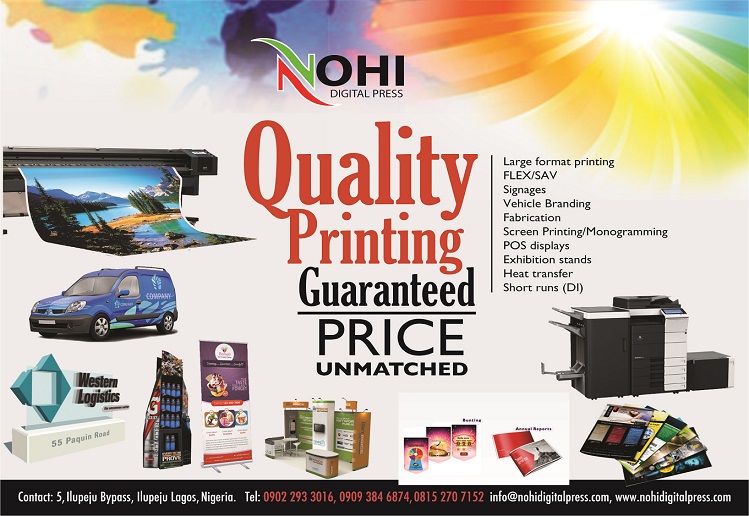This must be a great time to be an ink chemist. Whether it is for production inkjet, packaging, wide format or industrial printing, inks are evolving at a rapid pace to enable the fast-growing range of print applications.
As I covered in detail in a previous article (see “Surface Tension” in the August issue of WhatTheyThink), the idea that there will be one single ink that can print on every surface or object is pretty much the chemical equivalent of a perpetual motion machine. While the idea of a universal ink doesn’t necessarily violate basic laws of physics or chemistry, it certainly comes close enough to get a citation from the “Chemical Cops.” Still, new inks are emerging all the time that boast improved adhesion properties, while at the same time improving other ink qualities as well, such as durability, color gamut and drying time.
This article will offer a look at some of the recent developments specific to wide-format inks—and even more specific to solvent/eco-solvent and UV inks. Part Two of this series will look at latex, dye-sublimation and gel-based inks.
Solvent/Eco-Solvent
It was only a few years ago that there were rumblings that the demise of solvent inks was imminent, especially as newer, ostensibly more environmentally and operator friendly alternatives appeared. That has hardly come to pass, and solvent inks are just as popular as they ever were, largely thanks to the emergence of so-called “eco-solvent” inks.
Just a little background: Solvent inks use a class of chemicals called volatile organic compounds (VOCs) as a solvent. If you remember your high-school chemistry, a solvent is any substance in which another substance is dissolved. In inks, it’s the colorants that are dissolved in solvents. VOCs are powerful solvents (the term “aggressive” is often used) and their most attractive feature is that they dry very quickly and are especially useful on non-absorbent materials like vinyls and films, which is why they are widely used for vehicle graphics and other kinds of wraps. They are also among the least expensive inks. The downside to solvent inks is that they give off powerful fumes and can be hazardous to both the environment and the workplace, and require the installation of ventilation systems to protect worker safety.
“One of the major advantages of solvent inks is their ability to embed into the media rather than sitting on the surface like UV or latex inks do,” said David Lopez, associate product manager, Professional Imaging, Epson America. “This process allows for high outdoor durability and color fastness.”
Hence the need for “aggressive” solvents to penetrate into the material.
Enter eco-solvent inks. They use “friendlier,” less aggressive solvents to impart many of the benefits of solvent inks without—or at least without many of—the hazards. (By the way, it has been said that the “eco” doesn’t necessarily stand for “ecological” but rather “economical.” Potato, po-tah-to.) Early on, eco-solvent inks came with some trade-offs—slower drying times and lowered longevity, especially outdoors, but these issues have largely been overcome.
In fact, one of the drivers of eco-solvent ink development has been the increasing speed of printing equipment.
“As technology improves and customer expectations change, ink manufactures are having to adapt,” Lopez said. “When speeding up the printer, an ink has to be developed to be able to perform to the expectations of customers. It has to dry quickly, maintain its perfect size dot for quality, and have the longest possible durability. In addition to formulating the ink for high speed printers, color gamut and the ability to print as many colors in the Pantone library, is essential.”
It should be noted that the ability to use eco-solvent inks is not 100% due to the inks. It takes two to tango, as they say, and the properties of the substrates have evolved as well.
“Traditional solvent inks were very aggressive to ensure that they would bind to the materials being printing,” said Michael Maxwell, semior Manager, Mimaki USA. “Over the past 20 years, material chemistries have become more compatible with solvent processes enabling ink manufacturers to reduce the aggressive components to the point where outgassing—although still relevant—have been reduced to a point where ventilation is not always required. This trend has enabled solvent technology to become more ecologically friendly for the operator.”
They certainly have reduced the hazards associated with solvent inks, and most eco-solvent inks offered from equipment vendors such as Mimaki, Epson, Roland, Mutoh and others have received GREENGUARD and/or GREENGUARD Gold certification. GREENGUARD Certification is part of UL Environment, a business unit of UL (Underwriters Laboratories), and identify interior products and materials that have low chemical emissions. GREENGUARD Gold Certification requires stricter certification criteria, and is designed for materials intended for use in schools and healthcare facilities.
Ink aggression and employee safety aren’t the only issues of concern to ink and equipment manufacturers. Quality, performance and color gamut are perhaps of equal or greater importance.
“High-quality image demands are now the new normal,” Lopez said. “Customers today are looking for a reliable, high quality output with a versatile printer. The ability to hit 98.2% of the Pantone color library is a huge differentiator when doing prints for large brands that need to have correct color.”
“Due to the convergence of other print needs, such as photography printing on more durable or outdoor-capable substrates, there has been an increased demand for higher gamut,” Maxwell said.
And efficiency.
“With printhead technologies advancing, not only will inks have to be manufactured to meet the demands of speed, durability and quality, but they have to be optimized for productivity and efficiency,” Lopez said. “When thinking of the solvent customer, you have to take all aspects of printing into consideration. Having less downtime and more ink efficiency are vital to the customer experience.”
UV
One of the most exciting yet misunderstood ink technologies is UV, which cures via exposure to ultraviolet (UV) light. They dry very fast, are generally environmentally friendly, and can print on virtually any surface, which has been the source of their appeal. However, the phrase “virtually any surface” is where we often run into trouble. Without repeating too much of what was in the “Surface Tension” feature, the fact remains that despite UV inks’ flexibility, they still will have adhesion problems on certain substrates and surfaces, which is why those surfaces often need some kind of pre- or post-treatment, and even then there are no guarantees. Surfaces like glass, metal, some kinds of plastics and containers can pose challenges for UV inks. That said, ink chemists are beavering away in labs and doing their level best to develop UV inks that will work on as wide a variety of surfaces as possible.
Last summer, Fujifilm introduced its Uvijet OX inks, which were specifically formulated for use in the OnsetX series of printers from Fujifilm and Inca Digital (the OnsetX1-LT, OnsetX1, OnsetX2, OnsetX2 HS, OnsetX3 and OnsetX3 HS).













 Visit Today : 66
Visit Today : 66 This Month : 903
This Month : 903 Total Visit : 60789
Total Visit : 60789